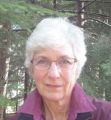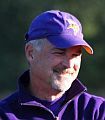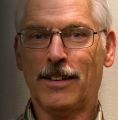BC’s PATH TO FOOD SECURITY IS THRU WATER SECURITY: “When we think of all the changes in thinking that we have gone through in the last 50 years, the Land Commission Act really is a testament to the incredible foresight demonstrated in 1973,” stated Joan Sawicki, former MLA

“At a time when most other jurisdictions continue to lose their food lands, BC’s ALR remains the most successful agricultural land preservation program in North America. With food security now becoming a top-of-mind public issue, thanks to the foresight demonstrated in 1973 we still have “the land” – and I submit we would not still have the option for viable agricultural sectors in high growth areas like the Lower Mainland or the Okanagan without the ALR. The ALR has been doing exactly what it was designed to do,” stated Joan Sawicki.
LIVING WATER SMART IN BRITISH COLUMBIA: “We would have to increase irrigated land area by 50% to attain food security in British Columbia. The Fraser Valley alone could provide 2/3 of the area needed!” stated Ted van der Gulik, President of the Partnership for Water Sustainability in BC

“The 50th anniversary of the ALR is an opportunity for reflection followed by action. The ALR saved the land. Without it, there would be no prospect for food security. Will today’s decision makers rise to the moment and secure the water supply necessary to irrigate the land needed for food security? The Agriculture Water Demand Model is a foundation piece for food security. The model utilizes detailed land use inventories and incorporates a 500 m gridded climate data set – the only one in North America. The model quantifies what we have versus what we need with respect to land and water,” stated Ted van der Gulik.
LIVING WATER SMART IN BRITISH COLUMBIA: “I had an epiphany. What if we capture the rainwater and put it in a cavity under the green roof, and then feed the green roof?” stated Harvy Takhar, Utilities Engineer with the City of Delta

In his quest to make a difference in the local government setting, Harvy Takhar has advanced the state of the art for green roof design. He looked through the water balance lens to conceive and demonstrate what he describes as the connected blue-green roof concept. In a nutshell, Harvy had an epiphany when he recognized there was a gap in green roof engineering. “The idea was to harvest the benefits of green roofs, So we added a water cavity that will feed the green roof portion with capillary irrigation, and it can draw water when it needs it,” stated Harvy Takhar.
LIVING WATER SMART IN BRITISH COLUMBIA: “Vancouver Island University is all-in because EAP, the Ecological Accounting Process, is an idea that can change the game with respect to protection or restoration of riparian integrity along streams. And students are excited to contribute to the change,” stated Graham Sakaki, Manager, Mount Arrowsmith Regional Research Institute

“The EAP Partnership was set up in a really unique, really valuable and viable way right from the beginning. The Partnership for Water Sustainability made the connections to the three local governments. Together, we met with each individually. Then we all got together as a group to talk about what our values are and what we are really hoping to achieve. The fact that the three are showing their support for the students, and for the training to occur, is a great story. I just wish that partnerships like this existed among all research projects,” stated Graham Sakaki.
LIVING WATER SMART IN BRITISH COLUMBIA: “You can do all the research that you want but you need good people in government to implement changes in engineering and development practices. They must be technically savvy and have the drive or desire to give back and do good work,” stated Dr. Chris May, retired Surface & Stormwater Division Director, Kitsap County Public Works in Washington State

For two decades, Chris May had a leadership position in Washington State local government – first with the City of Seattle and then with Kitsap County. The latter was his living laboratory. Because he was Division Director, he could put science into practice. “Kitsap is at a manageable scale. The County is big enough to effect change and make things better. That was our goal – have a positive impact on the community! We knew we needed to work on multiple scales and on multiple fronts to improve conditions in our small stream watersheds – that was our strategy,” stated Chris May.
LIVING WATER SMART IN BRITISH COLUMBIA: “Local governments have real data to quantify the financial value of streams as physical assets. This metric allows them to put streams into the basket of local government asset management responsibilities,” stated Tim Pringle, Chair of the Ecological Accounting Process (EAP) program

“If we know how to do a much better job of protecting ecological features and stream systems in our communities and on our landscape, then why aren’t we doing a better job? Why are streams still being degraded? These are among the questions driving the EAP program. The methodology and metrics focus on the land underlying the natural asset. In the case of stream systems, this is the setback zone defined in B.C. provincial legislation – namely, the Riparian Areas Protection Regulation,” stated Tim Pringle.
LIVING WATER SMART IN BRITISH COLUMBIA: “The Watershed Security Strategy is the obvious mechanism to revisit, understand, learn from, and leverage past successes in the building blocks continuum. We have tools to help do the job,” stated Ted van der Gulik, President of the Partnership for Water Sustainability in British Columbia

“A Partnership strength is the real-world experience we bring because of our multiple initiatives under Living Water Smart Actions. Under that vision, various building blocks processes have evolved over the decades. Living Water Smart successes are defined by collaboration and a “top-down and bottom-up” approach. This brings together decision-makers and community advocates. Successes are milestones along a building blocks continuum. We can achieve better stewardship of BC’s water resources for present and future generations,” stated Ted van der Gulik.
LIVING WATER SMART IN BRITISH COLUMBIA: “It would be huge if everyone in the Comox Valley valley continues to collaborate so that we are working towards the same outcome on the ground – protection of the water balance and prevention of hydrologic impacts,” stated Shelley Ashfield, Director of Operations with the Town of Comox

“Now that the Northeast Comox rainwater management plan is in place, water balance modeling is a requirement, and supporting bylaws help us regulate what developers must do on the ground. Two new bylaws underpin the Town’s regulatory framework for maintaining the water balance after land is developed. The framework accounts for all three pathways by which rainwater reaches a stream, incorporates an Adaptive Management Plan, and is supported by a monitoring program. The plan identifies triggers that would lead to changes,” stated Shelley Ashfield.
RICHARD BOASE IN CONVERSATION WITH MICHAEL BLACKSTOCK: “If young people were taught, by their parents and grandparents, from the moment that they can understand, that water has a spiritual dimension, it would become a way of life,” stated Richard Boase, facilitator for the Blue Ecology Seminar Series

“We have landed at the crux of two of the most important issues facing Canadians – relationships with First Nations and relationships with water – in an era when we must also adapt to a changing climate. Communities have a once in a generation opportunity to get our relationships with both right. First Nations talk about the responsibility for care of the land being passed on from one generation to the next. They have been much more effective than us in having the community understand their role in stewardship and why that matters,” stated Richard Boase.
LIVING WATER SMART IN BRITISH COLUMBIA: “In 2019, the provincial government’s Neil Goeller had an idea for building stewardship capacity. Within three years, he successfully brought the idea to fruition as a provincial program,” stated Kim Stephens when lauding this milestone accomplishment

“Building stewardship sector capacity to support local and provincial planning and resource management processes would enhance the effectiveness of stream stewards as champions for reconnecting hydrology and ecology in settled areas. It would also fill a gap in small creek systems where flow data are sparse to non-existent. Stream stewards can collaborate with governments and resource managers to support a science-based approach that interweaves Indigenous knowledge to educate the population writ large about the fragile nature of the ‘water balance’ in local creeksheds,” stated Kim Stephens.

